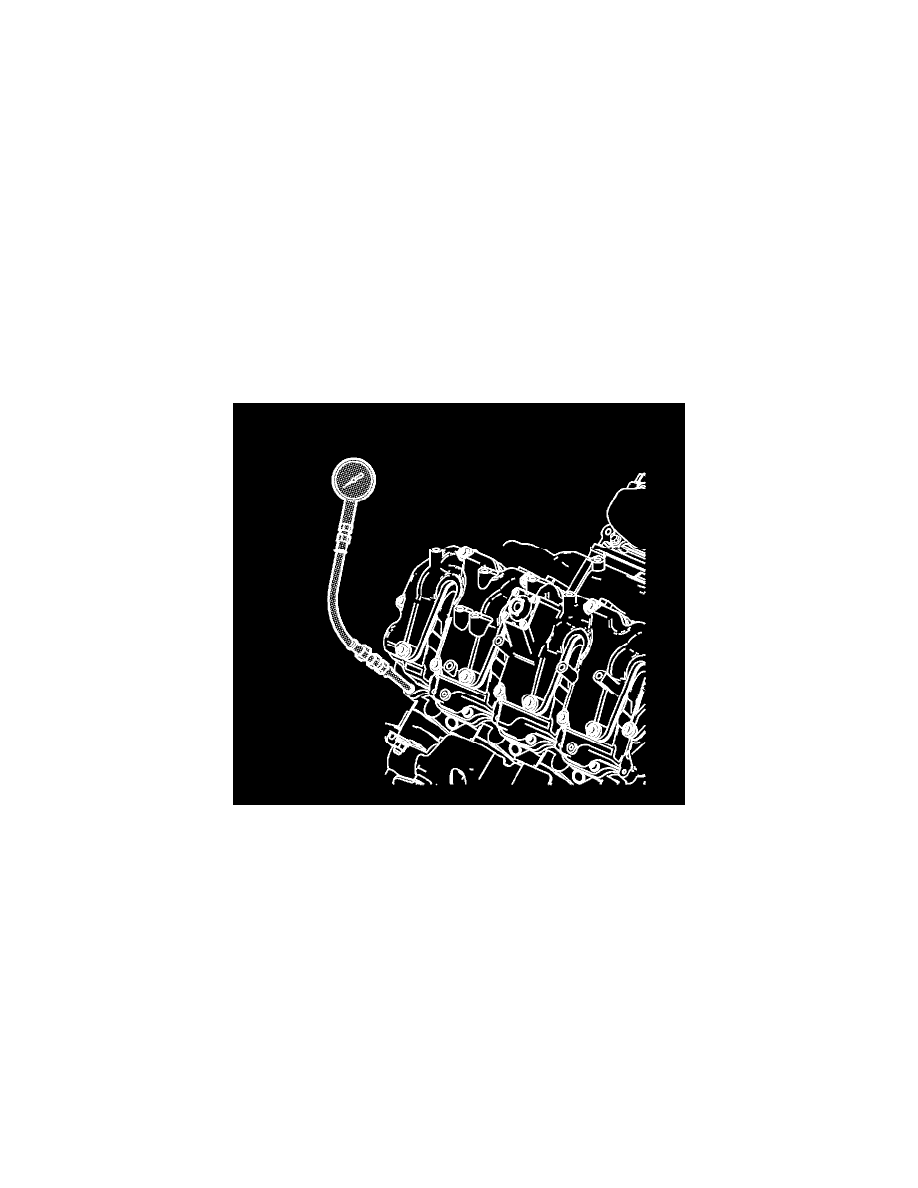Express 2500 V8-6.6L DSL Turbo (2010)

Compression Check: Testing and Inspection
VIN L
Engine Compression Test
Special Tools
*
J 26999 - Compression Gauge
*
EN-47603 - Compression Gauge Adapter
For equivalent regional tools, refer to Special Tools (See: Engine, Cooling and Exhaust/Engine/Tools and Equipment/Special Tools).
1. Ensure that the vehicle's batteries are in good condition, and fully charged.
2. Operate the vehicle until the engine is at normal operating temperature.
3. Shut off engine.
4. Disconnect glow plug nut; remove all 8 glow plugs. All 8 glow plugs must be removed from the engine during each cylinder test to obtain valid
test results.
5. Prior to taking a compression reading, verify the cranking speed is greater than 140 RPM. If the cranking speed is below 140 RPM, repair the slow
cranking speed condition before continuing with the compression test. Refer to Engine Cranks Slowly (See: Starting and Charging/Testing and
Inspection/Symptom Related Diagnostic Procedures/Engine Cranks Slowly).
6. Install the EN-47603 - adapter in the glow plug hole for the cylinder that is being checked.
Caution: Do not add oil to any cylinder during a compression test as extensive engine damage may result.
7. Connect the J 26999 - gauge to the EN-47603 - adapter.
Caution: Do not crank the engine using the ignition switch, as the fuel injectors and the glow plug circuits will be energized and engine damage
may result.
8. Using a remote start switch, crank the engine for 6 compression strokes, puffs, for the cylinder being tested.
9. Observe the J 26999 - gauge and note the reading as the compression test is being performed. A normal cylinder reading will be indicated if
compression builds up quickly and evenly to the specified level. An abnormal reading will be indicated if compression is low on the first
compression stroke, starts increasing on the following compression strokes but does not reach the specified level.
10. Record the compression reading for the cylinder just tested.
11. Disconnect the J 26999 - gauge from the EN-47603 - adapter and remove adapter from the glow plug hole.
12. Repeat steps 8 through 13 for all remaining cylinders. All 8 cylinders must be tested to obtain valid test results. Record the readings.
13. The minimum compression in any one cylinder is 2069 kPa (300 psi). There should not be more than 345 kPa (50 psi) difference between a
suspect cylinder and the average compression of all 8 cylinders.
Note: Cylinder to cylinder variation may be at the high end of the specification on engines with less than 20,000 km (12,427 miles).
